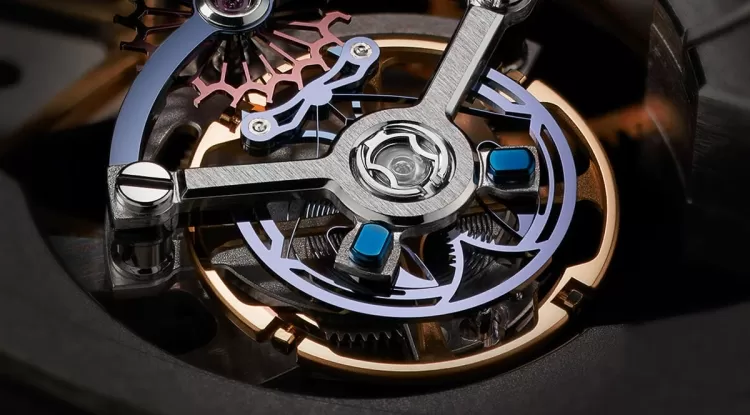The History and Evolution of Watches: From Ancient Inventions to Modern Wristwatches
Discover the fascinating history and evolution of watches, from ancient sundials and medieval pocket watches to modern wristwatches and smartwatches. Explore how each era’s innovations have shaped the art and technology of timekeeping.

The Inception of Timekeeping: Sundials and Water Clocks
The origins of timekeeping can be traced back to ancient civilizations, where people used sundials and water clocks to measure time. Sundials, first utilized by the Egyptians around 1500 B.C., relied on the position of the sun to cast shadows, marking the hours of the day. In parallel, water clocks details info, used by the Greeks and further refined by the Chinese, measured time through the steady flow of water, offering an innovative alternative that was less dependent on sunlight.
These rudimentary timepieces laid the groundwork for more sophisticated timekeeping methods, influencing societies worldwide by introducing structured hours and regulated schedules. While sundials and water clocks were effective for their time, they were large, stationary, and impractical for personal use.
Mechanical Clocks: The Medieval Marvels
The first significant leap in timekeeping technology arrived with the development of mechanical clocks in medieval Europe around the 14th century. These clocks used a gear system and weights to track the passage of time, often installed in church towers to signal the community with hourly chimes. These early mechanical clocks weren’t especially accurate, but they represented a major step forward in timekeeping precision and paved the way for portable clocks.
As technology improved, smaller versions of these clocks emerged, leading to the concept of a portable timepiece that individuals could carry—a precursor to the pocket watch.
The Renaissance and the Rise of Pocket Watches
The invention of the pocket watch in the 16th century marked a revolutionary shift in personal timekeeping. Originating during the Renaissance, pocket watches were powered by a spring mechanism, making them compact enough to be carried. Wealthy European aristocrats popularized these watches as a symbol of sophistication and status.
By the 17th century, technological innovations such as the balance spring greatly improved the accuracy of these watches. Pocket watches evolved to include ornate designs, intricate engravings, and jeweled decorations, making them a blend of artistry and function. Although they were limited to those of high social status due to their cost, pocket watches gradually became more accessible as production techniques improved.
Wristwatches: From Military Necessity to Fashion Icon
Although wristwatches were initially popularized among women in the early 20th century, their utility skyrocketed during World War I, when soldiers needed a hands-free method to keep track of time on the battlefield. Wristwatches were ideal for this purpose, leading to their widespread adoption by soldiers and eventually the general public after the war.
Post-war wristwatches quickly became mainstream and a significant cultural symbol. Watchmakers capitalized on the Art Deco movement in the 1920s and 1930s, producing elegantly styled wristwatches for both men and women. Innovations like water resistance and shock resistance were introduced, enhancing their durability and appeal as essential accessories.
The Quartz Revolution and Digital Watches
The 1970s marked a technological revolution with the introduction of quartz watches, transforming the watch industry. Unlike mechanical movements, quartz watches used battery-powered oscillators, making them highly accurate and affordable. Japanese watchmakers, particularly Seiko, led this “Quartz Revolution,” producing reliable, precise timepieces that disrupted the dominance of mechanical watches.
Quartz technology made watches more accessible to the masses and introduced digital displays, further broadening watch functionality. The era of digital watches began, incorporating alarm functions, chronographs, and illuminated displays, which expanded the utility and popularity of watches worldwide.
The Rise of Smartwatches: Technology Meets Fashion
In the 21st century, smartwatches have revolutionized the concept of wristwatches once again, blending technology with fashion and functionality. Pioneers like Apple, Samsung, and Fitbit have transformed watches into multi-functional devices that go beyond timekeeping. Today’s smartwatches offer fitness tracking, GPS navigation, communication features, and seamless integration with mobile devices, making them indispensable in the digital age.
The evolution from sundials to smartwatches reflects not only technological advancement but also the changing needs and lifestyles of society. Each era’s contribution, from mechanical innovations to digital functionality, underscores humanity's continuous drive to push the boundaries of watchmaking.
A Journey Through Time
The journey of watches from ancient sundials to modern smartwatches highlights our enduring fascination with timekeeping and the intricate blend of technology and craftsmanship in the watch industry. Every innovation, from mechanical marvels to digital advancements, has shaped the way we measure, manage, and interact with time. Today, watches stand as a symbol of both history and innovation, capturing the spirit of each era in every tick of the clock.
What's Your Reaction?




















